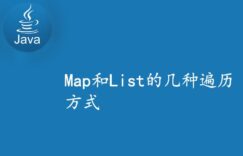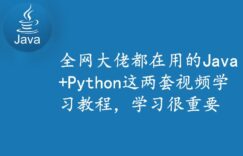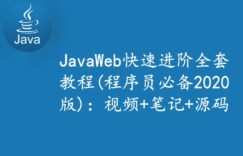如果你经常看编程方面的文章或视频,常常会收到关于同步和阻塞相关的推送或推荐,解释四种组合。很长一段时间我也搞不明白这些概念,但是似乎也对工作没有任何影响,带着这样的疑问,查阅了很多资料。网上有很多文章都是各种打比方,像排队买饭或是打电话预约等之类的,看了之后我更感觉更懵了。下面来说说我的理解,在这里主要还是解释概念,然后上代码演示,我相信看代码会比打比方能有更直观的感受。
同步(synchronous)和异步(asynchronous)
同步和异步其实就两种不同的编程风格,同步表示必须要等一个步骤执行完成有结果了,才可以执行后面的步骤。
// 同步代码演示
const result1 = step1()
// step1 是同步的,step2 必须要等等 step1 执行完成才可以执行
step2()
同步其实也意味着是 阻塞 的,上面的例子中 step1 执行的时候会阻塞当前 线程 ,如果 step1 执行时间太长,step2 也只能等,必须要顺序执行,我们可以把这个等待的过程就是阻塞。
而异步是不需要等待的,一个步骤还没有结果,下一个步骤就可以立即执行,不必按顺序,可以通过 回调 在未来处理结果。同步的顺序执行更符合人类直觉,而异步常常会很复杂,如果异步需要顺序,每个步骤都需要在上一个步骤的回调中执行,就会产生回调地狱。
// 异步代码演示,step1 不会立即返回结果,在 callback 中可以处理 step1 的结果
step1Async(callback)
// step1 调用后,step2 立刻执行,不需要等待 step1 执行完
step2()
关于同步和异步就说这么多,我觉得还是很好理解的,一般也不会在这里产生困惑。
BIO(blocking I/O)
BIO 就是阻塞的 IO,相信大家都很熟悉,也非常容易理解。
final FileInputStream fis = new FileInputStream("demo2.zip");
final byte [] bytes = fis.readAllBytes();
System.out.println("文件读取完毕:" + bytes.length + " 字节");
上面是 java .io 接口使用 BIO 模式读取文件内容的代码,不多赘述了,接着看 NIO。
NIO(New Input/Output)
网上有很多文章解释 NIO 是 non-blocking io,这是错的,实际上 NIO就是新的 io,下面是 Java 官方文档中的说明:
NIO 中大部分操作仍然是阻塞的,只有 SelectableChannel 支持 多路复用 ,可以实现无阻塞。所以,NIO 大部分 API 也是 BIO 。
Multiplexed, non-blocking I/O: Multiplexing is the ability to process multiple I/O operations in one channel. Selectable channels support this. A selectable channel can be put into blocking or non-blocking mode. In blocking mode, every I/O operation invoked upon the channel will block until it completes. In non-blocking mode, an I/O operation will never block and may transfer fewer bytes than were requested or possibly no bytes at all. See the SelectableChannel class.
NIO 中的 BIO 例子,使用 channel 读取文件,
下面是一个简单的例子,使用 nio 读取文件内容,仍然是阻塞的。
final Path path = Paths.get("demo2.zip");
final File Channel fc = FileChannel.open(path);
final ByteBuffer byteBuffer = ByteBuffer.allocate(1024);
int length;
long totalBytes = 0L;
while ((length = fc.read(byteBuffer)) != -1) {
totalBytes += length;
byteBuffer.clear();
}
System.out.println("文件的大小是 :" + totalBytes + " 字节");
为了减少代码量,我省略了读取文件内容的过程,只统计了字节总数。我看到外网有很多博客把这个读取文件代码说成是 synchronous non blocking,我认为是不对的。看了这段代码,相信你和我会是一样的感觉:这和同步阻塞有什么区别?其实这就是同步阻塞的。
NIO 无阻塞(non blocking)例子
下面是一个 Java 官方文档中给的例子,无阻塞时间服务,每当有客户端连接就向客户端打印当前的时间。我做了些精简,然后又加了一些中文注释。
// Selector for incoming time requests
Selector acceptSelector = SelectorProvider.provider().openSelector();
// Create a new server socket and set to non blocking mode
// ServerSocketChannel 实现了 SelectableChannel,支持无阻塞
ServerSocketChannel ssc = ServerSocketChannel.open();
// 设置为无阻塞模式
ssc.configureBlocking(false);
// Bind the server socket to the local host and port
InetAddress lh = InetAddress.getLocalHost();
InetSocketAddress isa = new InetSocketAddress(lh, port);
ssc.socket().bind(isa);
// Register accepts on the server Socket with the selector. This
// step tells the selector that the socket wants to be put on the
// ready list when accept operations occur, so allowing multiplexed
// non-blocking I/O to take place.
// 注册感兴趣的 key: OP_ACCEPT ,当 OP_ACCEPT 操作发生时,
// 会在下次的 selection operation 中看到(下面的 acceptSelector.select() )
SelectionKey acceptKey = ssc.register(acceptSelector, SelectionKey.OP_ACCEPT);
System.out.println(acceptKey);
// Here's where everything happens. The select method will
// return when any operations registered above have occurred, the
// thread has been interrupted, etc.
// select() 执行一个阻塞的 selection operation ,直到下面的其中一种情况发生:
// 1. 至少有一个 channel 被选择
// 2. 当前 selector 实例 的 wakeup 方法被调用
// 3. 当前线程被中断
// 这里 selector 会一直阻塞,直到 ssc (ServerSocketChannel)准备接受连接(前面注册了 OP_ACCEPT)
// while 的条件是 acceptSelector.select() > 0,只要不发生 2 和 3 的情况,循环就会一直进行下去
while (acceptSelector.select() > 0) {
// Someone is ready for I/O, get the ready keys
Set<SelectionKey> readyKeys = acceptSelector.selectedKeys();
iterator <SelectionKey> i = readyKeys.iterator();
System.out.println("while2");
// Walk through the ready keys collection and process date requests.
while (i.hasNext()) {
SelectionKey sk = i.next();
i.remove();
// The key indexes into the selector so you
// can retrieve the socket that's ready for I/O
ServerSocketChannel nextReady = (ServerSocketChannel) sk.channel();
// Accept the date request and send back the date string
Socket s = nextReady.accept().socket();
// Write the current time to the socket
PrintWriter out = new PrintWriter(s.getOutputStream(), true);
Date now = new Date();
out.println(now);
out.close();
}
}
上面就是一个同步无阻塞的例子,写的仍然是同步代码,我们能够明显感受到是通过 configureBlocking() 设置了无阻塞模式,然后就是代码比较复杂,有点绕(费脑)。 实际上这里的无阻塞指的是可以做到一个线程处理多个连接 ,不必一个请求处理完才可以处理下一个请求,这样相比一个线程只能处理一个请求的模式,就不容易因为请求太多而造成阻塞,提升了吞吐量。或者可以认为 无阻塞是请求无阻塞 ,这样可能更好理解,一般说到同步无阻塞都是说的连接处理,其它方面的例子我还没有见到。
编写一个客户端程序来验证下,连接服务,打印接收到的内容,然后退出。
final InetAddress lh = InetAddress.getLocalHost();
final Socket socket = new Socket(lh.getHostAddress(), port);
final InputStream in = socket.get InputStream ();
final byte[] bytes = in.readAllBytes();
System.out.println(new String(bytes));
上面的代码每次运行,都会打印出当前的时间。通过调试可以发现服务器端代码走到 acceptSelector.select() 就会阻塞不再继续,每次客户端建立连接,acceptSelector.select() 就会返回结果,进入循环中,处理完又继续阻塞等待。
AIO(asynchronous IO)
Java 中的 AIO 实际上也属于 NIO ,在 java.nio 这个包下,使用上只是略有区别,创建异步的 channel 即可。
final Path path = Paths.get("demo2.zip");
final AsynchronousFileChannel fc = AsynchronousFileChannel.open(path);
final ByteBuffer byteBuffer = ByteBuffer.allocate(1024);
long totalBytes = 0L;
long offset = 0;
while (true) {
final Future<Integer> future = fc.read(byteBuffer, offset);
// 读取返回的是一个异步结果,不会阻塞,下面的代码会立即执行,而不必等待
System.out.println("do something ... ");
// 调用 future 的 get() 等待异步完成返回结果,再继续后面的逻辑
int length = future.get();
if (length == -1) {
break;
}
offset += length;
totalBytes += length;
byteBuffer.clear();
}
System.out.println("文件的大小是 :" + totalBytes + " 字节");
这段代码和前面的使用 channel 读取文件的例子作用是一样的,不同的是使用了 AsynchronousFileChannel,读取内容返回的是 Future 对象来表示异步结果。代码中调用了 get() 方法在当前线程等待异步操作完成返回结果,get() 是阻塞的,直到异步完成或发生异常,相当于 es6 中的 await ,在 Java 中使用 Future 可以以同步的方式来写异步代码,避免写出非常复杂的回调。Future 在安卓程序的开发中比较常用,由于安卓只允许在主线程中渲染 UI,所以可以将一些异步操作(http 请求等)封装成 Future 对象返回,然后在主线程中等待所有的异步操作完成,拿到结果后再进行渲染。
后记
文章开头说了常常会有四种 IO 模式的区分的问题,有些面试题可能会问,但是本文的代码只演示了三种模式,实现是不存在异步阻塞模式的,只有三种模式,想想看,在异步中的代码不管是怎么写的,对于调用处来说都是无阻塞的。写了这么多,希望能对你有用。


